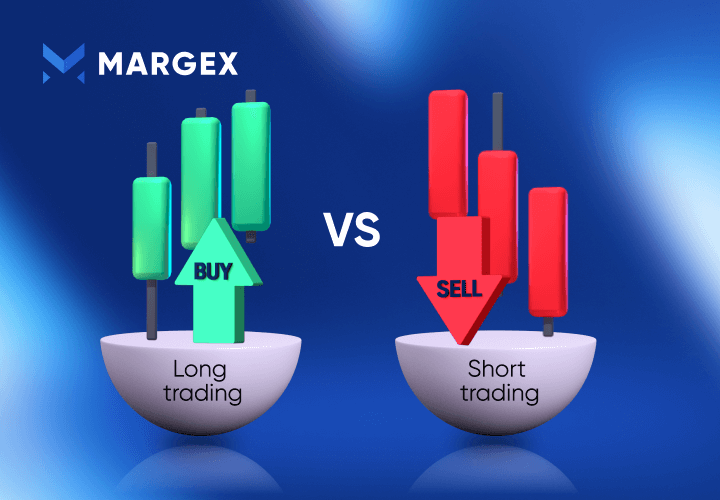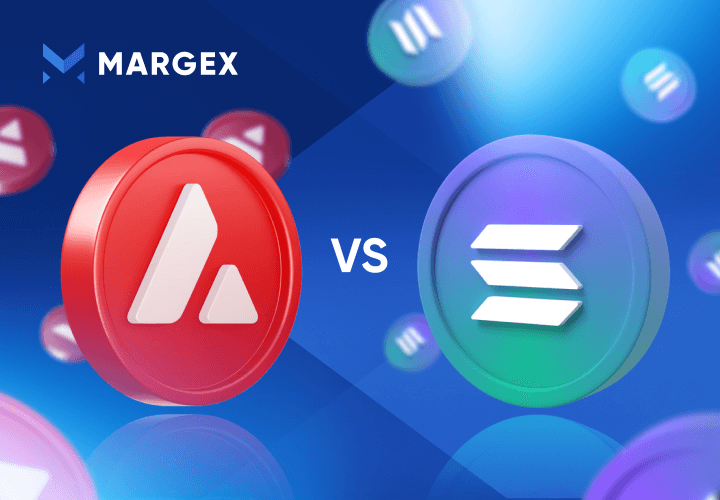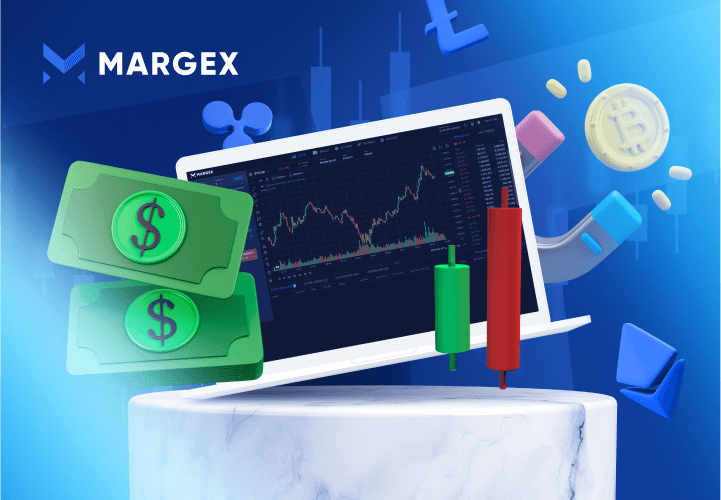Bitcoin, the world's number-one ranked cryptocurrency, is a pacesetter in the crypto sector. An anonymous individual or group going by Satoshi Nakamoto created the coin. Since emerging, Bitcoin has proven to be a durable project.
Bitcoin miners use the proof of work mechanism to produce new bitcoins. The process involves complex calculations performed by supercomputers. But how many bitcoins are there? The total number of bitcoins currently in circulation is 19,215,662.5. Bitcoin has a supply cap, meaning new BTCs will eventually stop entering the market.
According to the assets tokenomics (token economics), the maximum number of bitcoins that can be mined is 21 million BTC. To maintain this figure, Bitcoin undergoes halving, where the reward for miners is divided into two. This event occurs approximately every four years.
At inception, the block reward for mining per block was 50 bitcoins. However, after several halving events, it now stands at 6.25 for each bitcoin block added to the bitcoin blockchain.
Since over 19 million BTC have already been mined, it is possible to calculate how many bitcoins are left from the total number of BTCs. Currently, at the time of writing, there are 1,784,337.5 BTC left for miners from the total bitcoin supply.
Read on to discover more about how many bitcoins exist. You will also know the number of bitcoins that miners will earn.
How Many BTCs Will Miners Ever Create? Is There A Supply Limit?
Bitcoins have a supply limit of 21 million BTC. Bitcoin has halved three times thus far. Halving is the mechanism its developers use to control the supply of Bitcoin. For every 210,000 new blocks mined, the bitcoin mining reward for miners is halved. This process regulates the number of new bitcoins in circulation.
Currently, the bitcoin block reward stands at 6.25 for each new bitcoin block miners create. By past halving events, it is easy to get a clear picture of how many bitcoins are available. The total number of Bitcoin in circulation is 19,215,706 BTC.
Bitcoin miners still have a fair chance of mining and adding coins to the bitcoin network. Unfortunately, mining fees are relatively high. But, miners continually look for the best means to carry out profitable transactions on the blockchain.
A brief on bitcoin halving and how it regulates BTC circulating supply?
Bitcoin halving is the reduction of the reward miners receive by half the former value of every 210,000 blocks mined. Halving events occur approximately once every four years.
The last three halving events took place in 2012, 2016, and 2020. The next halving is in 2024. The bitcoin reward was originally at 50 BTC for miners but is currently at 6.25.
Bitcoin halving ensures that the quantity of coins mined in each block reduces with time. This halving makes BTC rare and increases its overall value. Bitcoin halving reduces the miners’ rewards and increases the asset's price.
Halving events take note of the economic principles of demand and supply. Without the halving, miners will rush in for the large rewards, and supply will be higher than demand. If this happens, the price will drop remarkably since there will be excess coins in circulation.
But miners will still compete to mine bitcoin if the price increases despite halving since they still earn valuable rewards. However, if the price of bitcoin stays the same: the miners will not be motivated to continue.
Historically, bitcoin’s inflation rate drops whenever a halving event occurs. In 2011 the bitcoin inflation rate was 50%. After halving in 2012, the rate fell to just 12%. After 2016 halving the inflation rate further reduced to 4-5%, the rate is currently at 1.77%.
With each halving event, the rate of bitcoin mining will reduce as it slowly approaches the 21 million mark. Over 90% of the total supply is currently in circulation.
Bitcoin halving always generates a buzz around the cryptocurrency with more media coverage. Recently, bitcoin has also seen real-world adoption increase that will have an impact; on the price.
How Long Does It Take For Miners To Mine Bitcoin Using Proof Of Work Mechanism?
It is almost impossible to determine the actual length of time to mine one bitcoin.
New bitcoins are mined - within ten minutes. However, bitcoin mining is influenced by variables.
Bitcoin mining is only considered complete when a new block on the bitcoin blockchain gets validated.
Any bitcoin miner that validates a new block successfully receives a block reward of 6.25 BTC.
Although the proof of work mechanism is more energy-consuming, it is more lucrative for miners and secure than most mechanisms.
Factors that influence the time taken to mine one bitcoin
Mining difficulty
The network hashing difficulty algorithm is a factor that also determines how long it takes to mine one bitcoin.
The algorithm was created to adjust and maintain the ten-minute standard block verification time.
Mining bitcoin is a tedious task as a miner either receives the 6.25 BTC reward in ten minutes or is left with nothing. Miners compete among themselves to solve these puzzles using high computational power.
Individual mining vs. mining pools
Previously, individual miners could easily mine bitcoin for rewards. However, after three halving events, the difficulty level of mining has now increased. Now, mining requires a large amount of energy and equipment to process.
It is quite expensive to start a solo mining bitcoin business. Bitcoin miners now mine fractions of bitcoin by combing their computing power in a mining pool. They can also create a mining farm and split the reward and yields among themselves.
Cloud mining is another innovative solution that helps miners mine bitcoin or other cryptocurrencies like Ethereum before the merge. With cloud mining, miners do not need to invest in expensive equipment.
But Bitcoin mining is no longer so profitable due to its mining fees as it draws closer to its maximum number. Miners now opt for other cryptos like Ethereum, dogecoin, and Ethereum classic.
Mining hardware used
The speed of mining dramatically depends on the specific type of hardware used to mine. Therefore, individual miners will most likely go for a cheaper option, which might be less effective.
However, mining pools mostly use Application-Specific Integrated Circuit (ASIC) chips for mining. These chips are specially designed to mine cryptocurrencies optimally using a specific hashing algorithm, SHA-256.
The Bitmain Antminer is an ASUC miner used for bitcoin. Some miners also use GPU for mining. However, they are less effective in competing with ASIC mining rigs for rewards on the bitcoin network.
Hash rate
This is simply a measure of the total computing power for validating transactions on a blockchain. High hash rates mean there are more participants on the network.
As a result, the competition on the network will be greater to validate new blocks. It also means that a potential attacker will work hard to attack the network.
Moreover, the higher hashrate implies that a miner's chances of success will be relatively lower. However, it is good for the security of the bitcoin network.
Why Does BTC Have A Supply Cap?
Bitcoin’s limited supply helps protect its value from inflation by creating scarcity. When scarcity increases, the value of an asset also rises. Bitcoin’s founder Satoshi Nakamoto built the fixed supply into its digital code.
This program notes how many bitcoins are on the blockchain at any given time.
Reasons for BTC supply limit?
Inflation
The fixed supply protects BTC from inflation by having a finite quantity like gold and other precious items. Some other crypto projects with an infinite supply, like Shiba Inu, have low market values and are worth little.
Bitcoin, however, is still valuable even in a steep bearish market. Many investors still move to increase their BTC holdings. Users see the coin as a deflationary tool to combat inflation since it is confined to a limited supply.
To preserve its status as a store of value.
Although bitcoin prices have dipped, it still holds more value than most fiat currencies. A single coin has so much value and potential to increase. Institutional and individual investors adopt bitcoin to preserve their portfolios.
Bitcoin is the first decentralized currency, and its original purpose is to facilitate transactions between individuals without third-party influence. Investors and crypto enthusiasts believe that as more people adopt bitcoin, it only increases in value.
Despite the volatile nature of cryptocurrencies, Bitcoin's strong point has been its durability and reliability. Some altcoins have infamously drawn investors into pump-and-dump schemes.
Bitcoin has, however, recorded an exponential return on investment over the years, turning early investors into millionaires.
Durability
Bitcoin was not created to be a gamble but to act as a currency. The limited supply has helped to preserve the durability of the token over the years. Putting too much BTC in circulation will be counter-productive to its long-term status
Why Does Bitcoin Use Proof-Of-Work And Mining
Bitcoin uses proof of work and mining to create new blocks, secure the network and validate transactions. Miners contribute to the validating process and get rewards for the transaction processing with a fee paid in BTC.
Since bitcoin is decentralized and supports peer-to-peer transactions, the blockchain needs a mechanism to achieve security and consensus.
Proof of work is a consensus algorithm used on the bitcoin network. It can randomly select the node that will mine and validate a block depending on how many coins the node holds.
The more tokens are stored in a wallet; the more mining power will be assigned. Mining is capital and energy intensive, and a solo mining operator must invest in quality equipment.
How bitcoin blockchain technology works
All cryptocurrencies operate on a blockchain and a network. A blockchain is simply a distributed ledger- a database that stores data using highly secured encryption. When a transaction is completed on the blockchain, information from the previous block is copied into the new block. New data is then added, and the block is encrypted.
These transactions on the blockchain; are verified by the validators. For a blockchain like bitcoin that uses the proof of work mechanism, the validators on the chain are called miners.
Bitcoin uses a 256-bit hexadecimal number (the SHA-256 algorithm) to encrypt data. This number contains all the transaction data in the previous blocks before the new block.
The data linking between blocks is what creates a blockchain. Validated miners on the network queue all transactions. The miners compete to verify them for rewards.
The mining software and hardware; work to solve the cryptographic puzzles. This puzzle is a four-byte number attached to a block header.
The block header is then hashed or regenerated by a miner continuously till it meets the target number specified on the blockchain. Once the miner gets this number, the block header is solved, and a new block is created.
What happens when bitcoin reaches its maximum circulating supply of 21 million?
The total supply of bitcoin will not get to 21 million anytime soon. The bitcoin network uses bit-shift operators, which mathematically round down decimal points to the closest smaller integer. This rounding down process is done during halving, when block rewards will be divided in half.
If miners reach the maximum supply of bitcoin, no new bitcoins will be given as rewards. The miners will continue adding transactions to blocks and processing them. However, the reward system will change.
When this happens, the block reward will be just 0.000000011641532 BTC per block. Thirty more halving events will occur before the block reward gets to zero.
In the post-block reward era, bitcoin miners will get rewards as transaction processing fees. These transaction fees still go to miners to secure the network.
Bitcoin will maintain this processing fee to promote equity and uphold the consensus on the blockchain.
Bitcoin hitting this maximum number will most likely affect miners, depending on other economic factors at play. If bitcoin as a cryptocurrency has gotten stronger, then miners can make a decent profit from the processing fees.
If bitcoin is used as a store of value rather than for regular transactions, then miners can profit even without block rewards. Miners can also take advantage of the layer 2 blockchains to make a profit and create faster transaction times.
Also, some adverse effects might come when the block reward ceases. They include:
Formation of cliques: Miners can form groups to influence the price of a transaction and make a profit. This could be detrimental to the on-chain governance in the long run.
Self-centered miners: There is also the possibility of miners hiding new blocks to be released later without confirmation from the network. This will increase block processing times and increase the fees charged for the new blocks on the blockchain.
FAQ – Questions About Bitcoin, Its Supply, And Properties
There are more important details you must know about bitcoin supply, mining, and cap. Find the answers below.
How many bitcoins do miners earn every day?
There are 144 blocks of bitcoin mined daily, which contain 6.25 bitcoins in each block. Multiplying the 144 blocks with 6.25 BTC (144 x 6.25) gives us 900 new bitcoins in a day.
With innovations in mining hash power, recent blocks are created at 9.5-minute intervals. This innovation has made the process much faster, meaning that more than 900 bitcoins: are mined per day.
Is Bitcoin a deflationary asset?
Bitcoin acts as a deflationary asset using if four-year halving cycle. Currently, the next halving will take place in 2024.
Halving diminishes Bitcoin supply and controls inflation. With miners receiving smaller rewards after each halving, it helps preserve the coin's value.
How many bitcoins are left, and what is the maximum number of bitcoins?
There are approximately close to 1.8 million bitcoins left for miners to compete for.
Experts forecast that the last bitcoin will be mined by 2140. By that time, the total circulating bitcoin will be 21 million.21 million BTC is the maximum number miners can ever compete for on the network.





